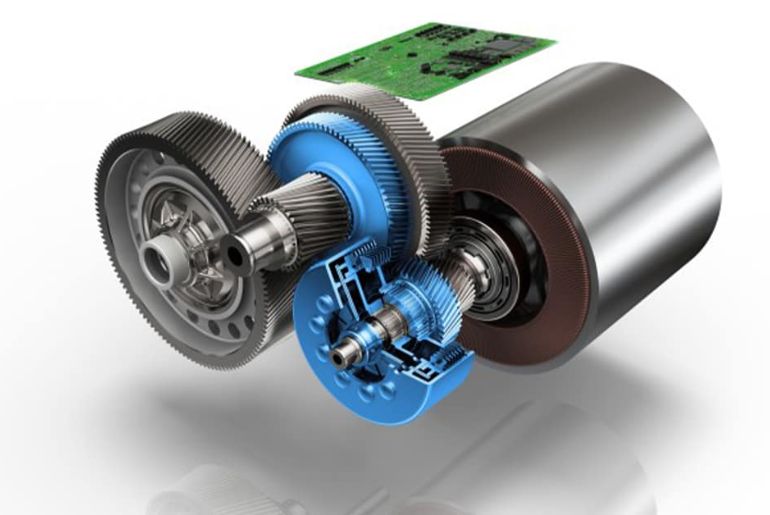The evolution of electric vehicles (EVs) has been marked by rapid advancements in battery technology, electric motors, and overall vehicle design. However, one aspect that has traditionally set internal combustion engine (ICE) vehicles apart from EVs is the transmission system. While most EVs currently use single-speed transmissions, there is growing interest in the potential of multi-speed transmissions, especially for high-performance EVs. This article explores the future of multi-speed transmissions in high-performance electric vehicles, examining their benefits, challenges, and implications for the automotive industry.
The Current State of EV Transmissions
Most electric vehicles on the market today employ a single-speed transmission system. This design choice is driven by the unique characteristics of electric motors, which can deliver high torque from a standstill and maintain that torque across a wide range of speeds. The simplicity of single-speed transmissions offers several advantages, including reduced mechanical complexity, lower weight, and improved reliability. These factors contribute to the efficiency and smooth operation of EVs, making them ideal for the majority of use cases.
However, as the demand for high-performance EVs grows, the limitations of single-speed transmissions become more apparent. High-performance vehicles require not only rapid acceleration but also the ability to sustain high speeds over extended periods, a challenge that can strain single-speed systems. This has led to renewed interest in multi-speed transmissions as a means to enhance the performance and efficiency of electric vehicles, particularly in the high-performance segment.
Advantages of Multi-Speed Transmissions in EVs
-
Improved Acceleration and Top Speed
Multi-speed transmissions can optimize the power delivery of electric motors, allowing for better acceleration and higher top speeds. By enabling the motor to operate within its optimal efficiency range across a broader spectrum of speeds, a multi-speed transmission can enhance the overall driving experience. For high-performance EVs, this translates to quicker acceleration times and the ability to reach higher top speeds without compromising efficiency.
-
Enhanced Efficiency
Electric motors are most efficient when operating at a specific range of speeds. A multi-speed transmission can help maintain the motor within this optimal range, reducing energy consumption and extending the vehicle’s range. This is particularly important for high-performance EVs, where energy demands are higher due to the need for greater power output. By optimizing motor performance, multi-speed transmissions can contribute to improved range and reduced energy costs.
-
Reduced Heat Generation
High-speed operation can lead to increased heat generation in single-speed transmissions, which can impact the longevity and performance of the motor and other components. Multi-speed transmissions can alleviate this issue by distributing the load more evenly across different gears, reducing the strain on the motor and minimizing heat buildup. This can enhance the durability and reliability of high-performance EVs, making them more suitable for demanding driving conditions.
-
Improved Towing and Load Capacity
For EVs used in applications requiring towing or carrying heavy loads, a multi-speed transmission can provide the necessary torque and power without compromising efficiency. This capability is particularly relevant for electric trucks and SUVs, where maintaining performance under load is crucial. Multi-speed transmissions can offer the flexibility needed to handle varying driving conditions, making high-performance EVs more versatile and capable.
Challenges and Considerations
While the benefits of multi-speed transmissions in high-performance EVs are clear, there are also significant challenges to their implementation:
-
Increased Complexity
One of the primary advantages of single-speed transmissions is their simplicity. Introducing multi-speed transmissions adds mechanical complexity, which can lead to higher manufacturing costs, increased maintenance requirements, and potential reliability concerns. For EV manufacturers, balancing the performance gains with these added complexities is a key challenge.
-
Weight and Packaging
Multi-speed transmissions are inherently heavier and bulkier than single-speed systems. In the context of high-performance EVs, where weight reduction is critical for maximizing range and performance, the added weight of a multi-speed transmission can be a drawback. Engineers must carefully consider how to integrate these systems without compromising the vehicle’s overall design and efficiency.
-
Software and Control Systems
The integration of multi-speed transmissions into EVs requires advanced software and control systems to manage gear shifts seamlessly. Unlike ICE vehicles, where gear shifts are mechanically driven, EVs require precise electronic control to ensure smooth transitions between gears. Developing these systems adds another layer of complexity and requires significant R&D investment.
-
Market Demand and Cost
The high cost of developing and implementing multi-speed transmissions may limit their adoption to niche markets, such as high-performance sports cars and luxury vehicles. For mainstream EVs, where affordability is a key consideration, the additional cost may outweigh the benefits. Manufacturers must assess whether the performance gains justify the investment, particularly in a market where cost competitiveness is critical.
The Future Outlook
Despite these challenges, the future of multi-speed transmissions in high-performance EVs looks promising. As technology advances, the automotive industry is likely to overcome many of the obstacles currently associated with multi-speed systems. Lightweight materials, improved manufacturing processes, and more sophisticated control systems could make multi-speed transmissions more viable and cost-effective.
Moreover, the growing demand for high-performance EVs, coupled with the push for greater efficiency and range, will likely drive further innovation in this area. We may see more automakers experimenting with multi-speed transmissions, particularly in models aimed at enthusiasts and those seeking top-tier performance.
Conclusion
The integration of multi-speed transmissions into high-performance electric vehicles represents an exciting frontier in automotive engineering. While single-speed transmissions have served the majority of EVs well, the specific demands of high-performance vehicles necessitate a more sophisticated approach to power delivery and efficiency. As the technology matures, multi-speed transmissions could become a defining feature of the next generation of high-performance EVs, offering drivers the best of both worlds: exhilarating performance and uncompromising efficiency.

